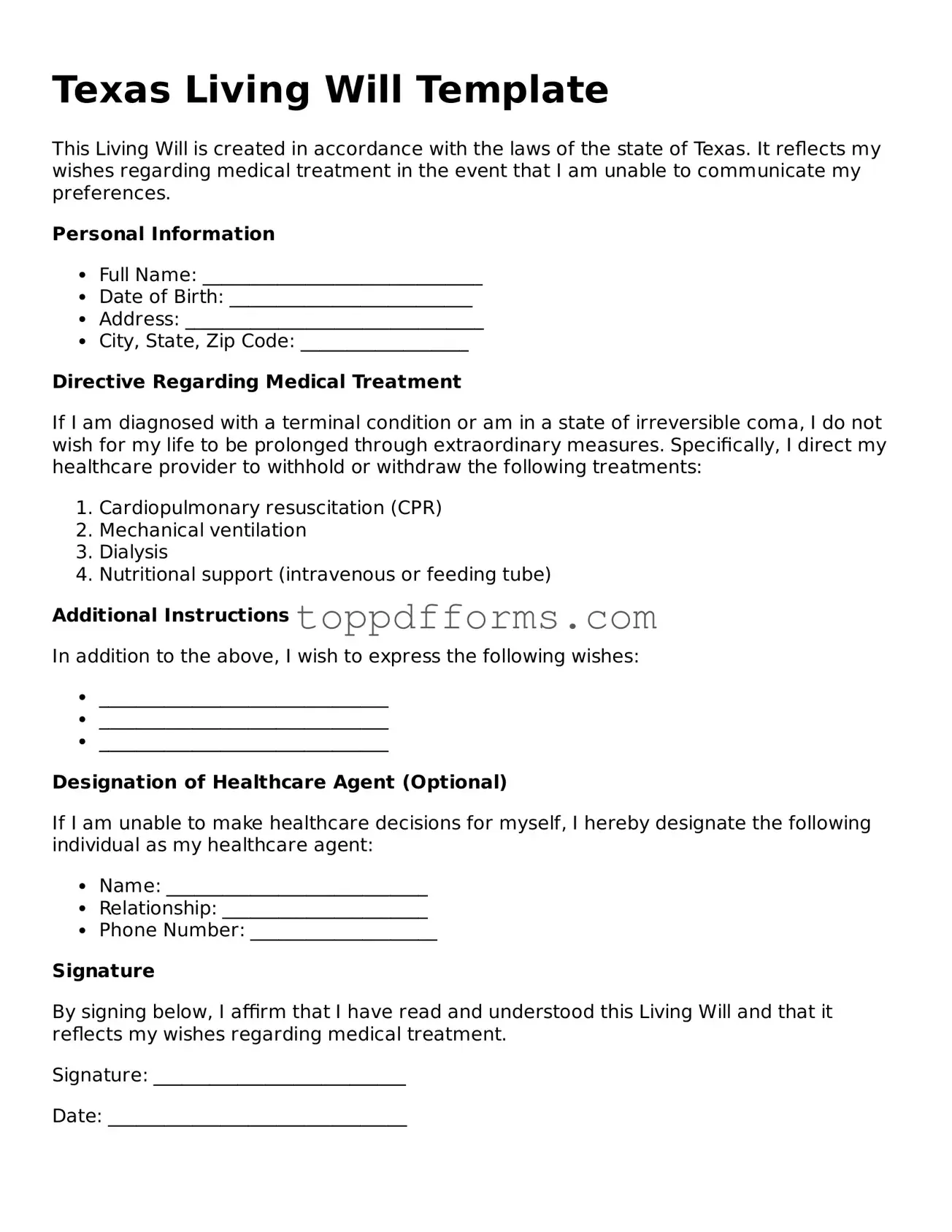Filling out a Texas Living Will form can be a straightforward process, but many people make common mistakes that can lead to confusion or invalidation of their wishes. One frequent error is not clearly stating their medical preferences. It’s essential to be specific about the types of treatments you want or do not want. Vague language can create uncertainty for healthcare providers and family members.
Another mistake involves not signing the document in the presence of the required witnesses. In Texas, you need to have two witnesses sign the Living Will to validate it. These witnesses must meet specific criteria; for instance, they cannot be related to you or have any financial interest in your estate. Failing to adhere to these rules can render the document ineffective.
Many individuals overlook the importance of dating the form. A Living Will without a date can lead to complications, especially if there are multiple versions of the document. Always include the date when you complete the form to ensure that your most current wishes are clear and legally recognized.
Some people forget to review their Living Will periodically. Life circumstances change, and so might your preferences regarding medical treatment. Regularly revisiting and updating your Living Will ensures that it accurately reflects your current wishes. This is especially important after major life events such as marriage, divorce, or the birth of a child.
Additionally, individuals sometimes fail to communicate their decisions with family members. It’s not enough to just fill out the form; discussing your wishes with loved ones can help prevent misunderstandings during critical moments. Open conversations can also provide emotional support for both you and your family.
Another common mistake is not considering the inclusion of alternate decision-makers. If your primary choice is unavailable or unable to make decisions, having a backup can help ensure that your wishes are honored. Naming alternates can prevent delays in treatment and reduce stress for your family.
Some people also neglect to check the legal requirements for their specific situation. For example, if you are a minor or have certain medical conditions, additional steps may be necessary. Understanding the legal landscape surrounding Living Wills in Texas can help you avoid pitfalls that could invalidate your document.
Another error is using outdated forms. Laws and requirements can change, so it’s crucial to use the most current version of the Texas Living Will form. Using an outdated form may not reflect the latest legal standards, which could complicate matters when the time comes to enforce your wishes.
Lastly, individuals sometimes assume that filling out a Living Will is a one-time task. In reality, it’s important to keep your Living Will in a safe place and inform your healthcare provider and family members where it is located. This ensures that your preferences are easily accessible when needed.
By being mindful of these common mistakes, you can create a Texas Living Will that accurately reflects your wishes and stands up to legal scrutiny. Taking the time to carefully fill out the form can provide peace of mind for you and your loved ones.
